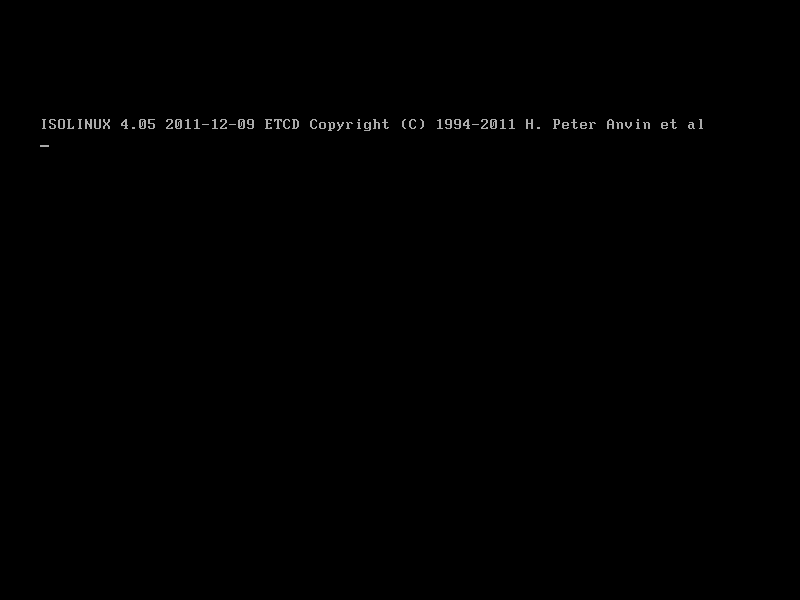Difference between revisions of "User:Michael Jin"
Michael Jin (talk | contribs) m (Tutorial for VMs with Sugar) |
Michael Jin (talk | contribs) m (Tutorial for VMs with Sugar) |
||
| Line 49: | Line 49: | ||
<br><br> | <br><br> | ||
[[File:Sugar_BootMenu.png]] | [[File:Sugar_BootMenu.png]] | ||
| + | <br><br> | ||
| + | When you hit the "Enter" key on your keyboard or it started automatically, you should briefly see this on your screen. | ||
| + | <br><br> | ||
| + | [[File:sugar_boot0.png]] | ||
<br><br> | <br><br> | ||
Revision as of 03:48, 28 November 2012
This is a guide to setup Sugar as a VM on your computer.
Getting Started
VMware Player (here)
Sugar LiveCD/USB (http://wiki.sugarlabs.org/go/Sugar_on_a_Stick/Downloads here)
VirtualBox Instructions (not yet complete).
VMware Player
Running your VM for the first time
Please install VMware Player (here) first.
Then run VMware Player for the first time.
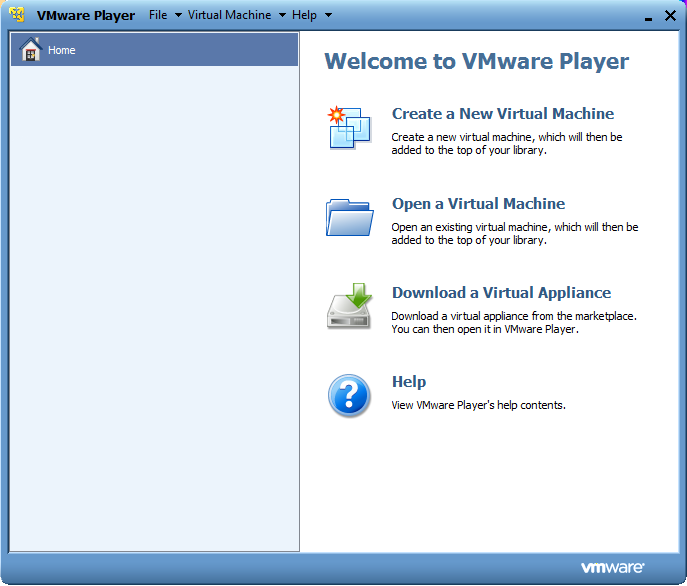
Click the "Browse" button to search for the .ISO file you downloaded in "Getting Started". Then, click the "Next >" button.
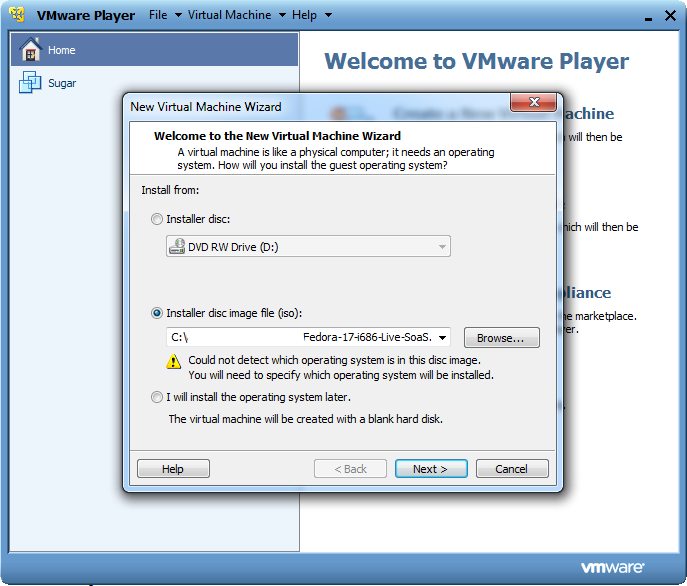
Select "Other" for both "Guest Operating System" and "Version", and click the "Next >" button.
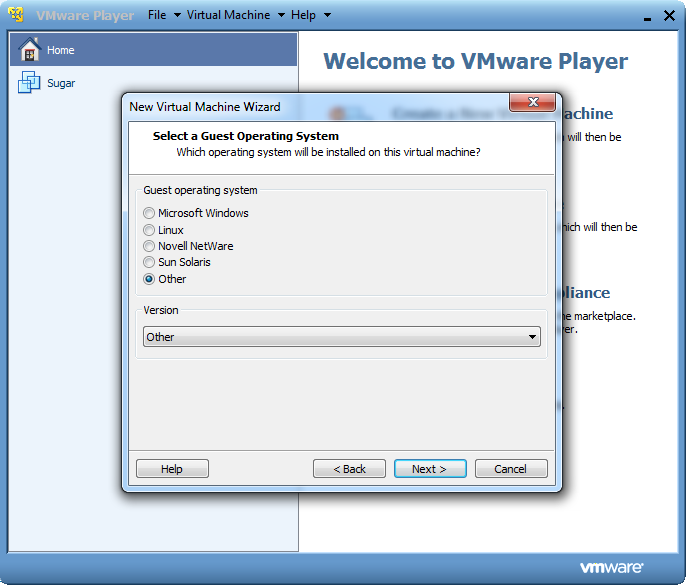
You are free to rename Other to something different (I chose Sugar) and click the "Next >" button.
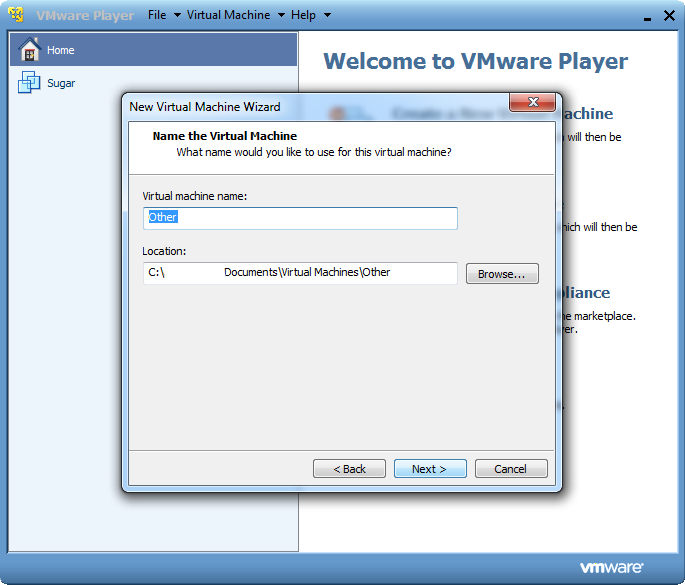
By default, VMware Player will try to make the disk size of the VM 8GB. If this seems to be too much for you, lower it and just make sure you have 4GB+ set for the disk size.
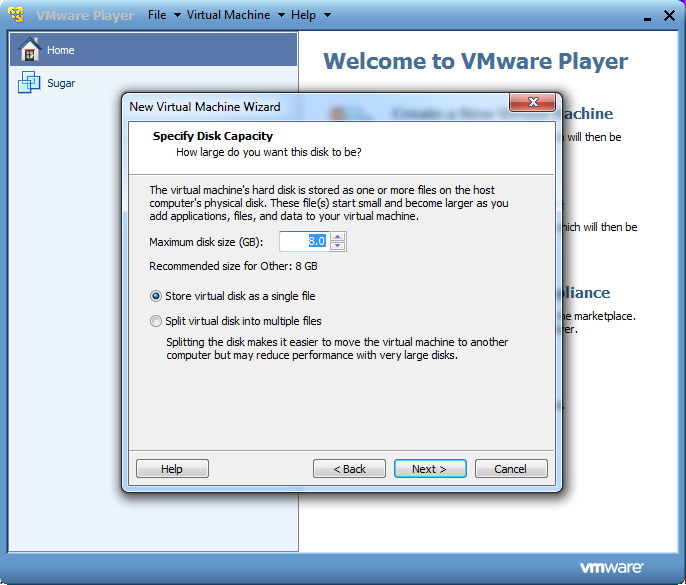
Click "Customize Hardware", we need to increase the memory.
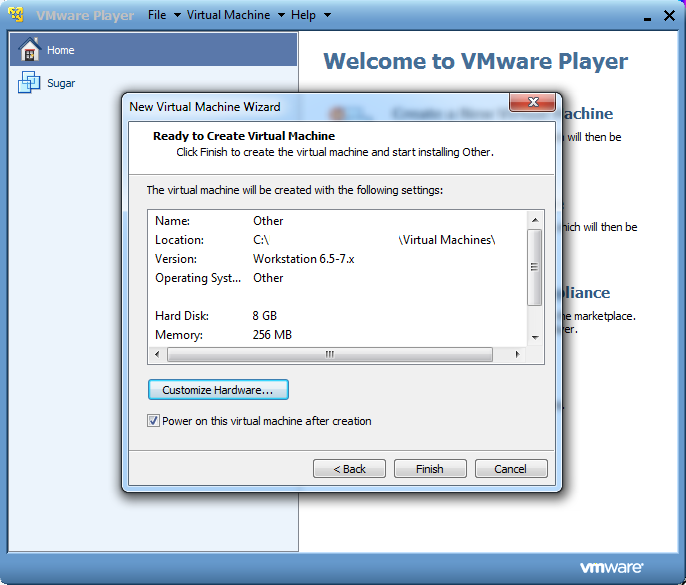
Set the memory to 512MB+ (more than 512MB if your computer has memory to spare).
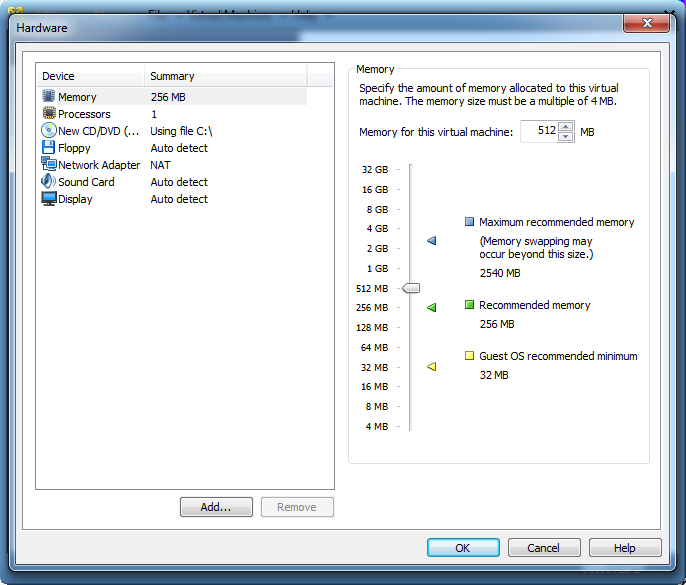
Click the "Finish" button to complete the setup of your VM.
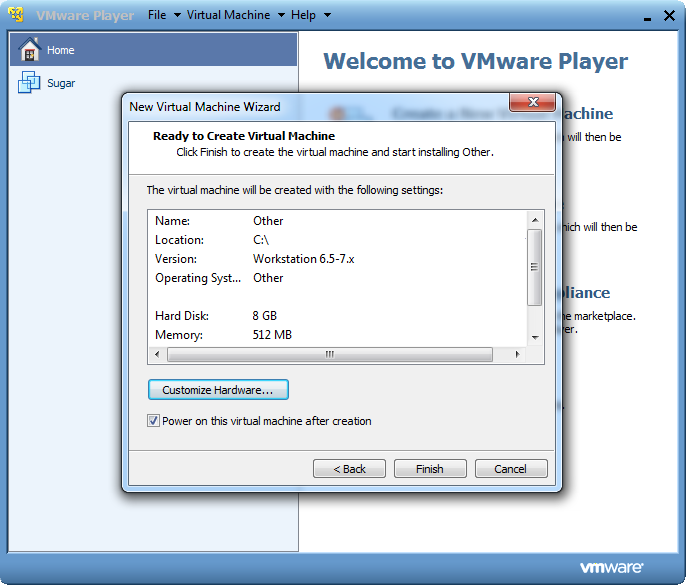
Now select your VM (I named mine Sugar earlier), you can now click "Play virtual machine".
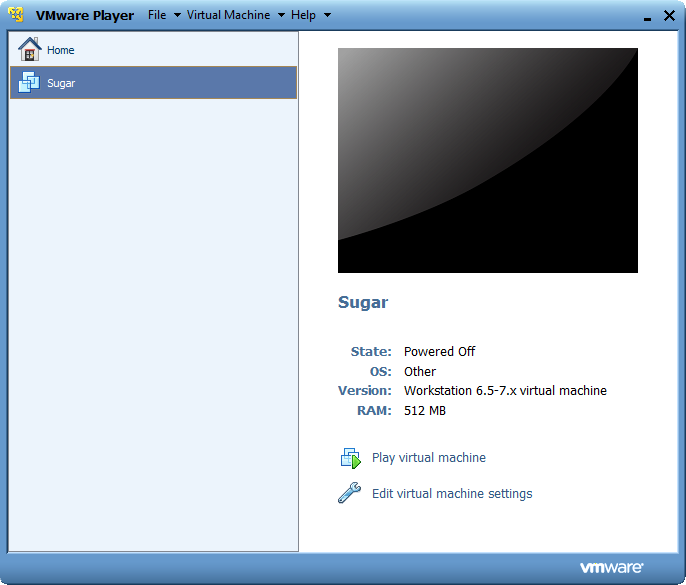
You should now see the following boot screen.
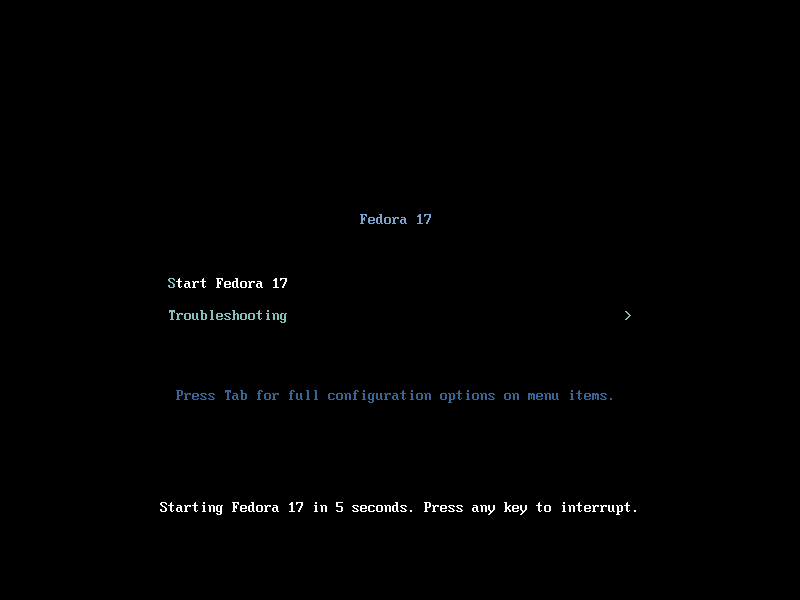
When you hit the "Enter" key on your keyboard or it started automatically, you should briefly see this on your screen.
